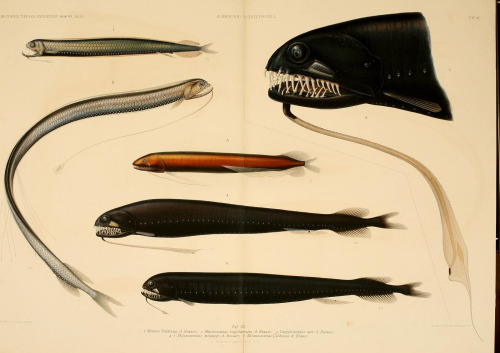Latest SDO PFSS Image For: AIA 0171

Latest SDO PFSS image for: AIA 0171
More Posts from Hannahhaifisch and Others

Counting the stars in the universe is like trying to count the number of sand grains on a beach, it’s not possible. Although estimates vary among different experts, the general consensus is that there are at least between 100 billion and 200 billion galaxies in our universe. Think about that for a moment, and now throw in billions of stars in each galaxy! (source) This number could very easily be in the trillions for all we know.
A team of scientists gathered data on more than 8000 galaxies that surround the one we live in, also mentioned above, the Milky Way galaxy. They mapped each galaxies movement and position in space and discovered that the Milky Way galaxy is part of one giant system that contains a number of other galaxies, referred to as a supercluster.


Physicists discover hidden aspects of electrodynamics
Radio waves, microwaves and even light itself are all made of electric and magnetic fields. The classical theory of electromagnetism was completed in the 1860s by James Clerk Maxwell. At the time, Maxwell’s theory was revolutionary, and provided a unified framework to understand electricity, magnetism and optics.
Now, new research led by LSU Department of Physics and Astronomy Assistant Professor Ivan Agullo, with colleagues from the Universidad de Valencia, Spain, advances knowledge of this theory. Their recent discoveries have been published in Physical Review Letters.
Maxwell’s theory displays a remarkable feature: it remains unaltered under the interchange of the electric and magnetic fields, when charges and currents are not present. This symmetry is called the electric-magnetic duality.
However, while electric charges exist, magnetic charges have never been observed in nature. If magnetic charges do not exist, the symmetry also cannot exist. This mystery has motivated physicists to search for magnetic charges, or magnetic monopoles. However, no one has been successful. Agullo and his colleagues may have discovered why.
Read more ~ SpaceDaily








Hubble Views The Final Frontier For Dark Matter
“This phenomenon of gravitational lensing stretches galaxies into streaks and arcs, magnifying them, and creating multiple images. It also enables us to reconstruct the mass distribution of the cluster, revealing that it’s mostly due to dark matter.”
When you look out at the distant Universe, you can see all sorts of things: stars, galaxies, clusters of galaxies, going as far back into the distant past as our telescopes can image. But where you have the greatest concentrations of mass, an extreme phenomenon emerges: that of gravitational lensing. Any foreground objects lying behind that mass will have their light stretched, magnified and distorted by the intervening matter. Recently, as part of the Hubble Frontier Fields program, the telescope followed-up on galaxy cluster Abell 370, and revealed the most spectacular gravitational lensing signal ever seen in a galaxy cluster. Most importantly, it provides some very strong evidence not only for dark matter’s existence, but for its presence distinct from any galaxies at all.
Come get the full story in images, videos, and no more than 200 words on this edition of Mostly Mute Monday!






June 8th is World Oceans Day - a day to celebrate the oceans that connect and sustain all of us. Our colleagues at the Biodiversity Heritage Library have been leading up to today with a series of blog posts exploring historic publications that mark important milestones in the progress of marine bioscience research and ocean exploration.
Top image: Whale shark from Illustrations of the zoology of South Africa… v.4 (1845) Middle top : radiolarians and jellyfish from Ernst Haeckle’s Kunstformen der Natur (1904) Middle bottom: giant squid from Cassell’s Natural History v.5-6 and cuttlefish from Voyage de la corvette l'Astrolabe Mollusques and Zoophytes Atlas (1833) Bottom: deep sea fish from Valdivia Expedition…1898-1899. Bd. 15, T. 1

“X-rays reveal the inner beauty of shells.” National Geographic. March 1955.

0007

Robot uses Human to create Art - Dragan Ilic


Quantum tunnelling
Tunneling is a quantum mechanical effect. A tunneling current occurs when electrons move through a barrier that they classically shouldn’t be able to move through. In classical terms, if you don’t have enough energy to move “over” a barrier, you won’t. However, in the quantum mechanical world, electrons have wavelike properties. These waves don’t end abruptly at a wall or barrier, but taper off quickly. If the barrier is thin enough, the probability function may extend into the next region, through the barrier! Because of the small probability of an electron being on the other side of the barrier, given enough electrons, some will indeed move through and appear on the other side. When an electron moves through the barrier in this fashion, it is called tunneling.

Quantum mechanics tells us that electrons have both wave and particle-like properties. Tunneling is an effect of the wavelike nature.

The top image shows us that when an electron (the wave) hits a barrier, the wave doesn’t abruptly end, but tapers off very quickly - exponentially. For a thick barrier, the wave doesn’t get past.
The bottom image shows the scenario if the barrier is quite thin (about a nanometer). Part of the wave does get through and therefore some electrons may appear on the other side of the barrier.
Because of the sharp decay of the probability function through the barrier, the number of electrons that will actually tunnel is very dependent upon the thickness of the barrier. The current through the barrier drops off exponentially with the barrier thickness
Source: nanoscience.com | Images: x | x | x







Double triangle sawtooth by Miguel Angel Blanco Muñoz. I have liked how time seemed to slow down, folding the grid.
-
 hannahhaifisch reblogged this · 8 years ago
hannahhaifisch reblogged this · 8 years ago -
 hannahhaifisch liked this · 8 years ago
hannahhaifisch liked this · 8 years ago -
 sdomission reblogged this · 8 years ago
sdomission reblogged this · 8 years ago